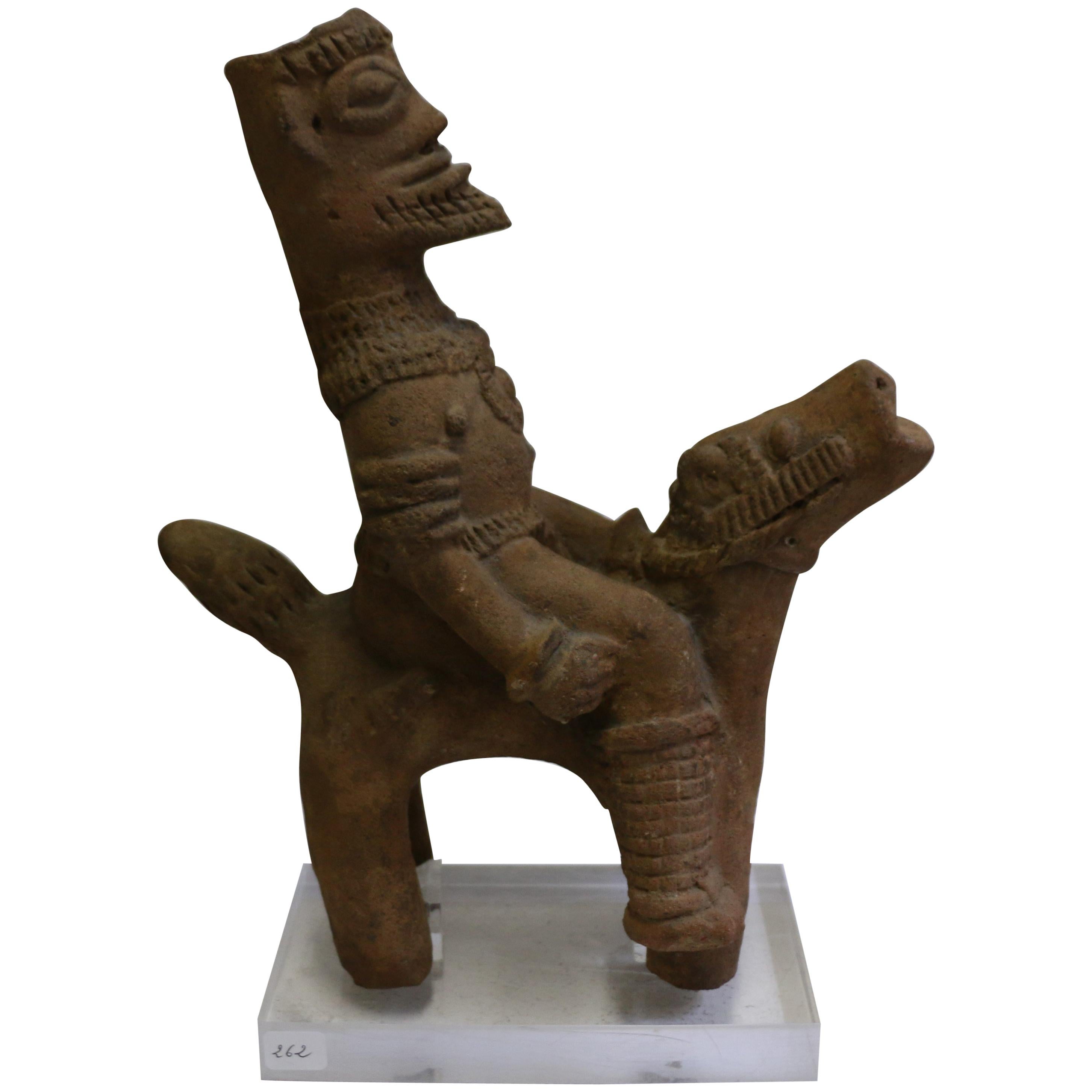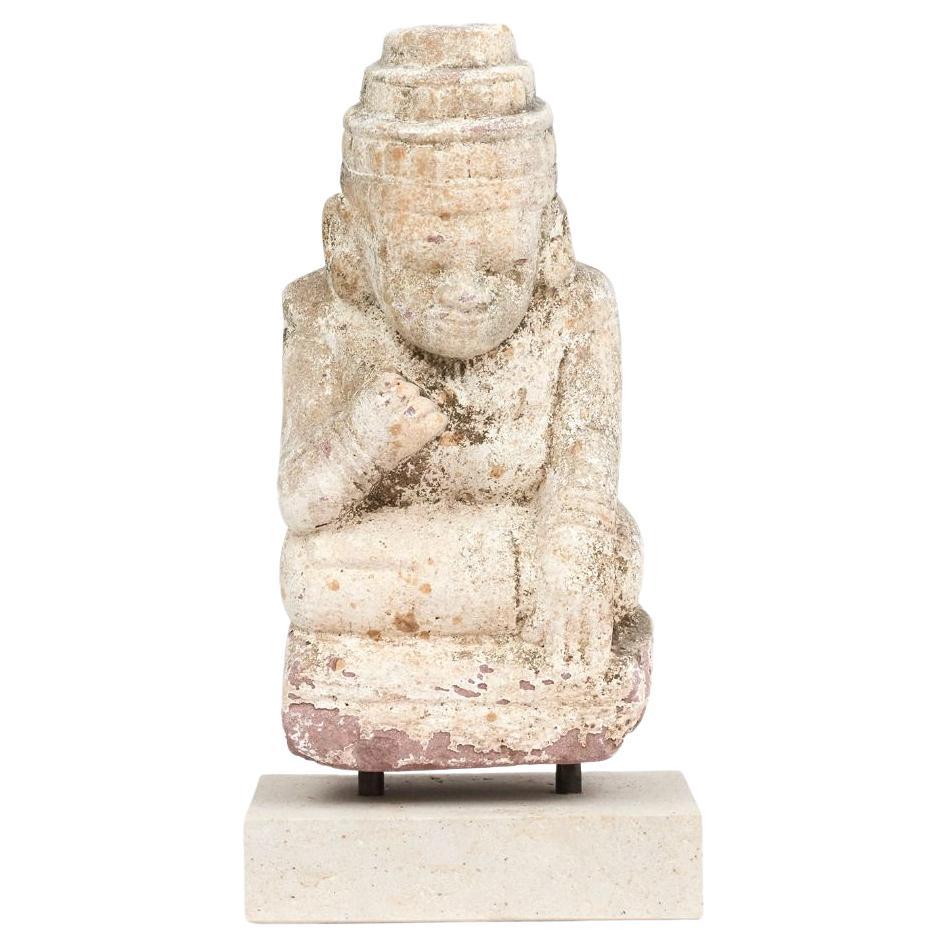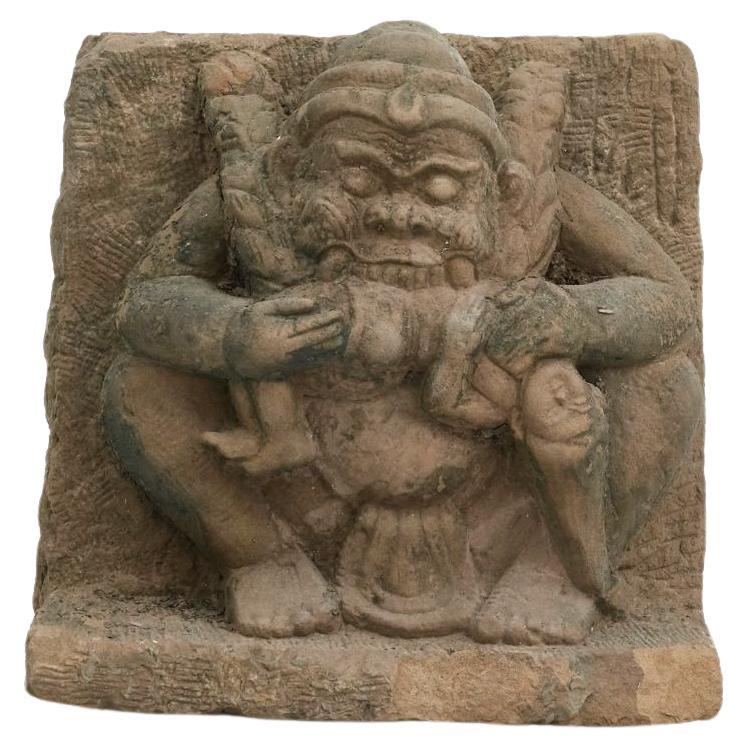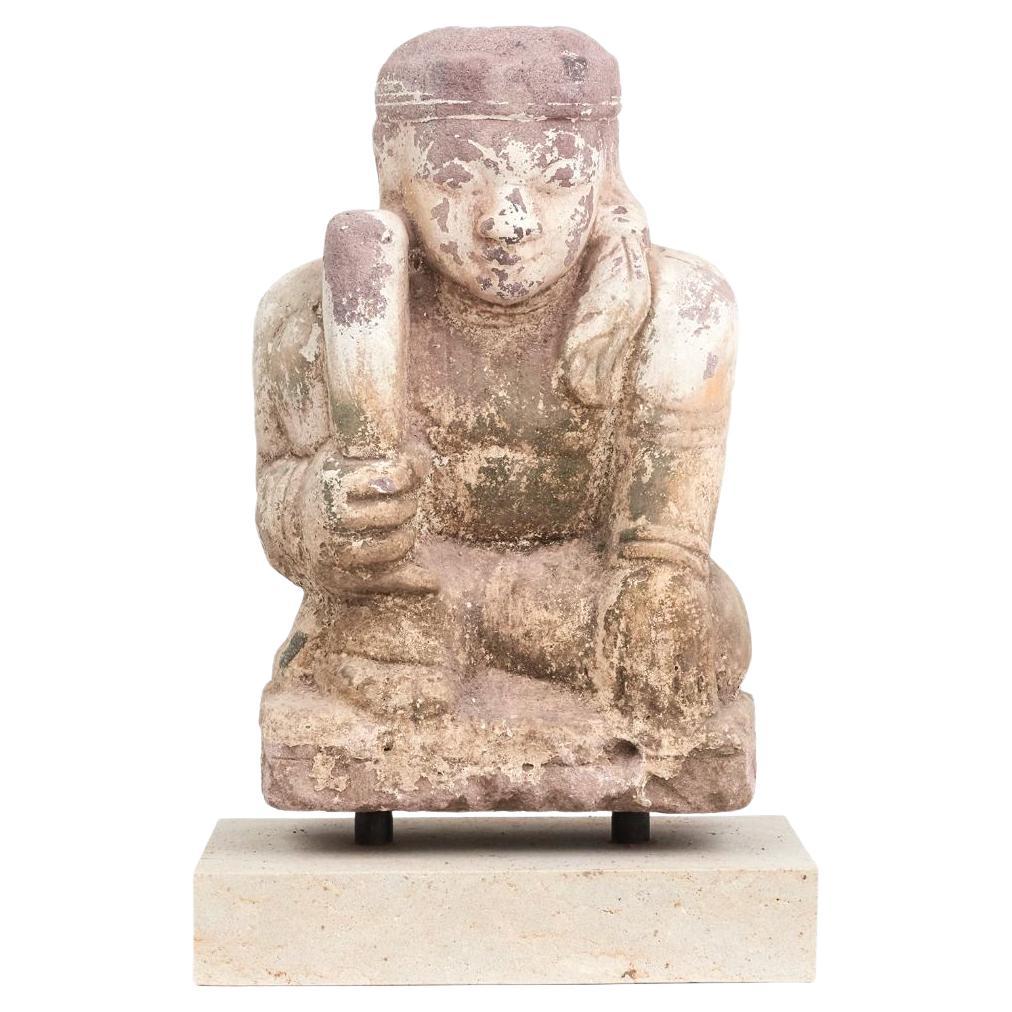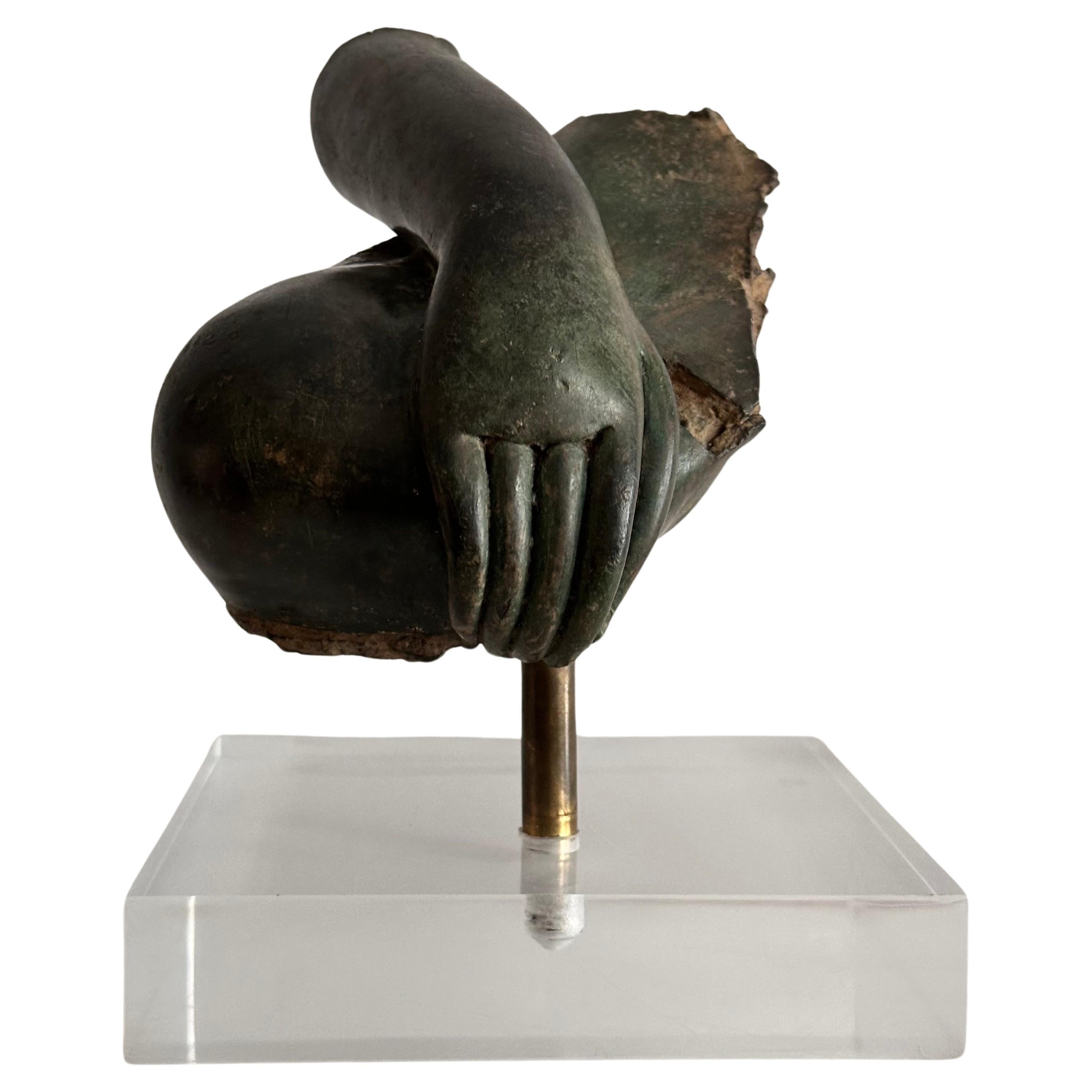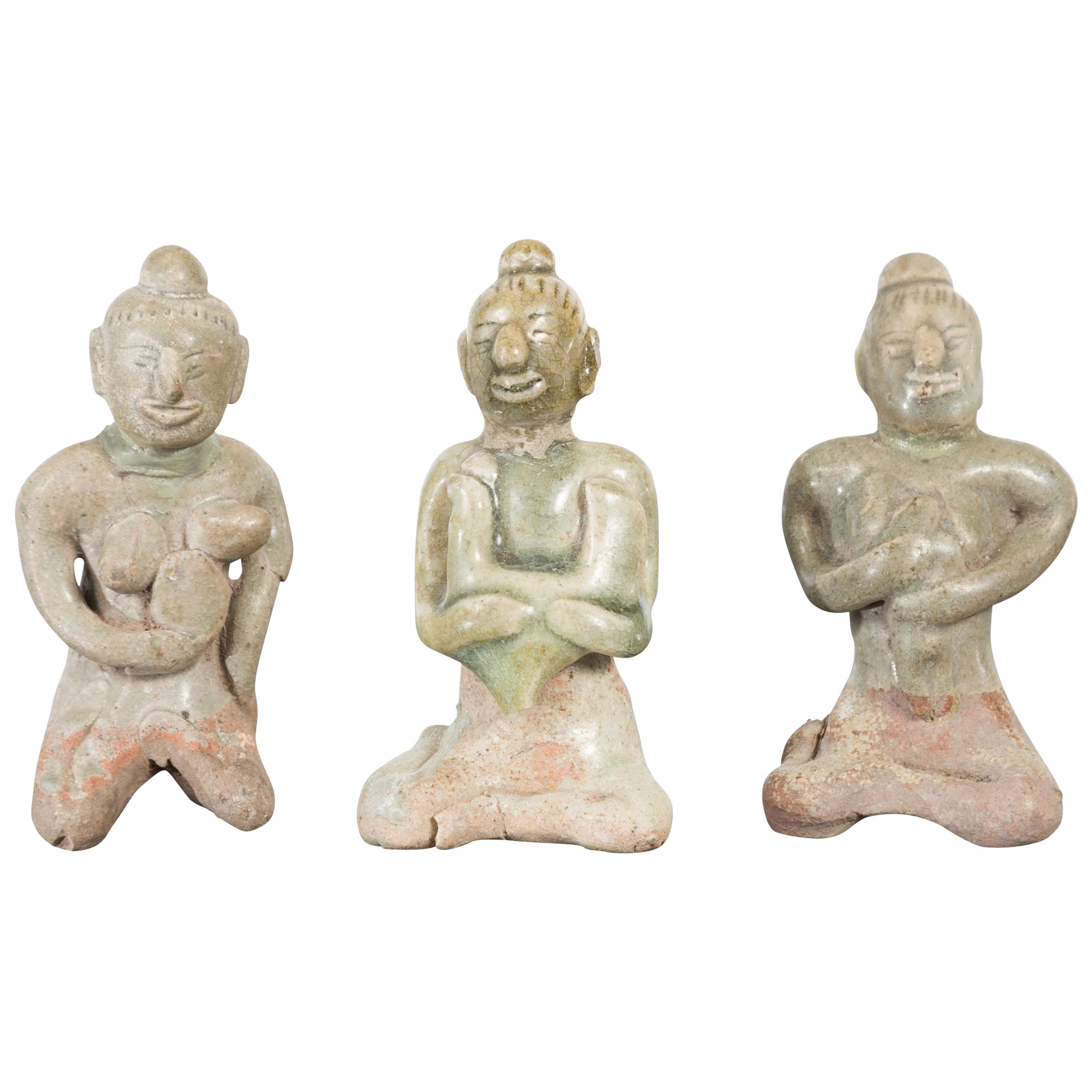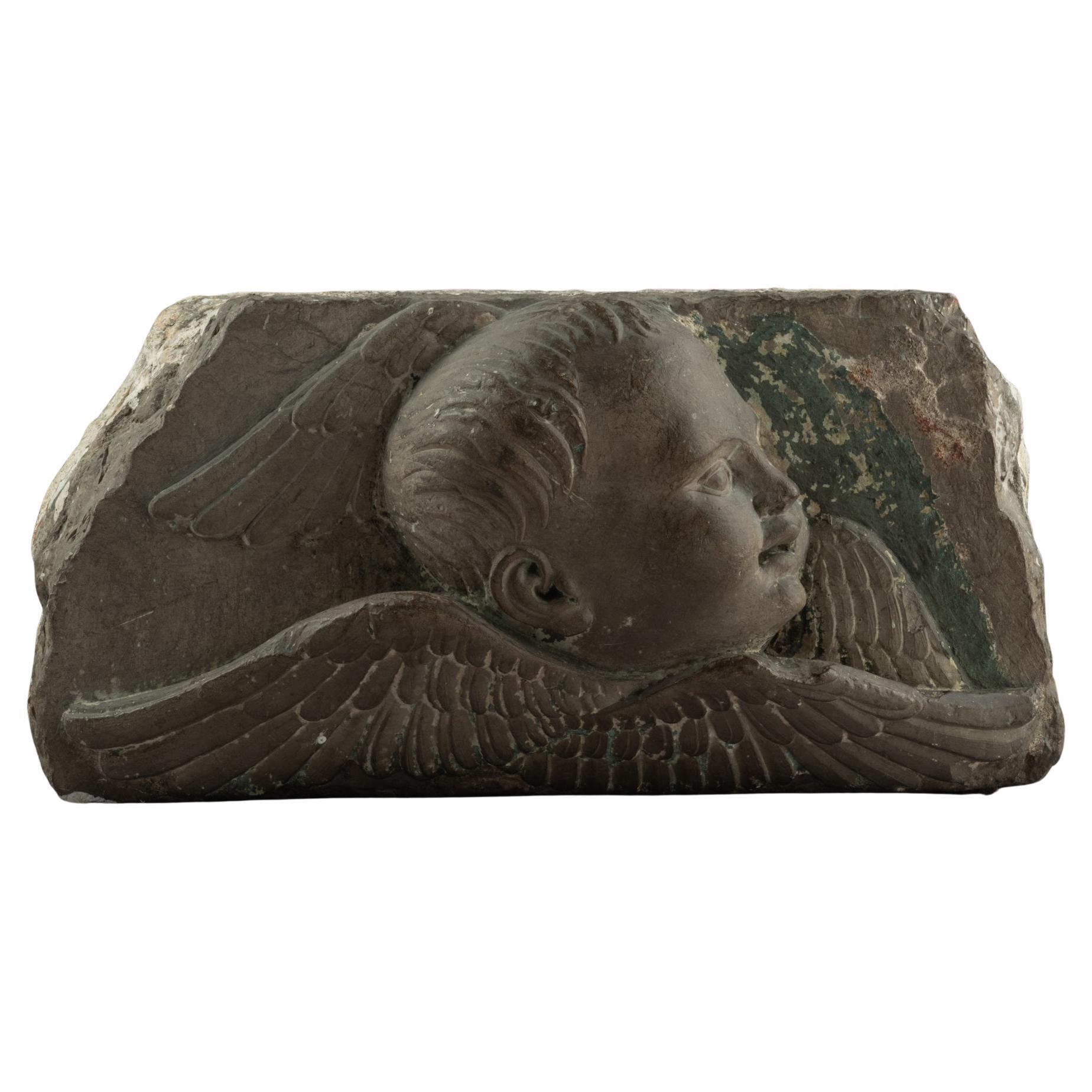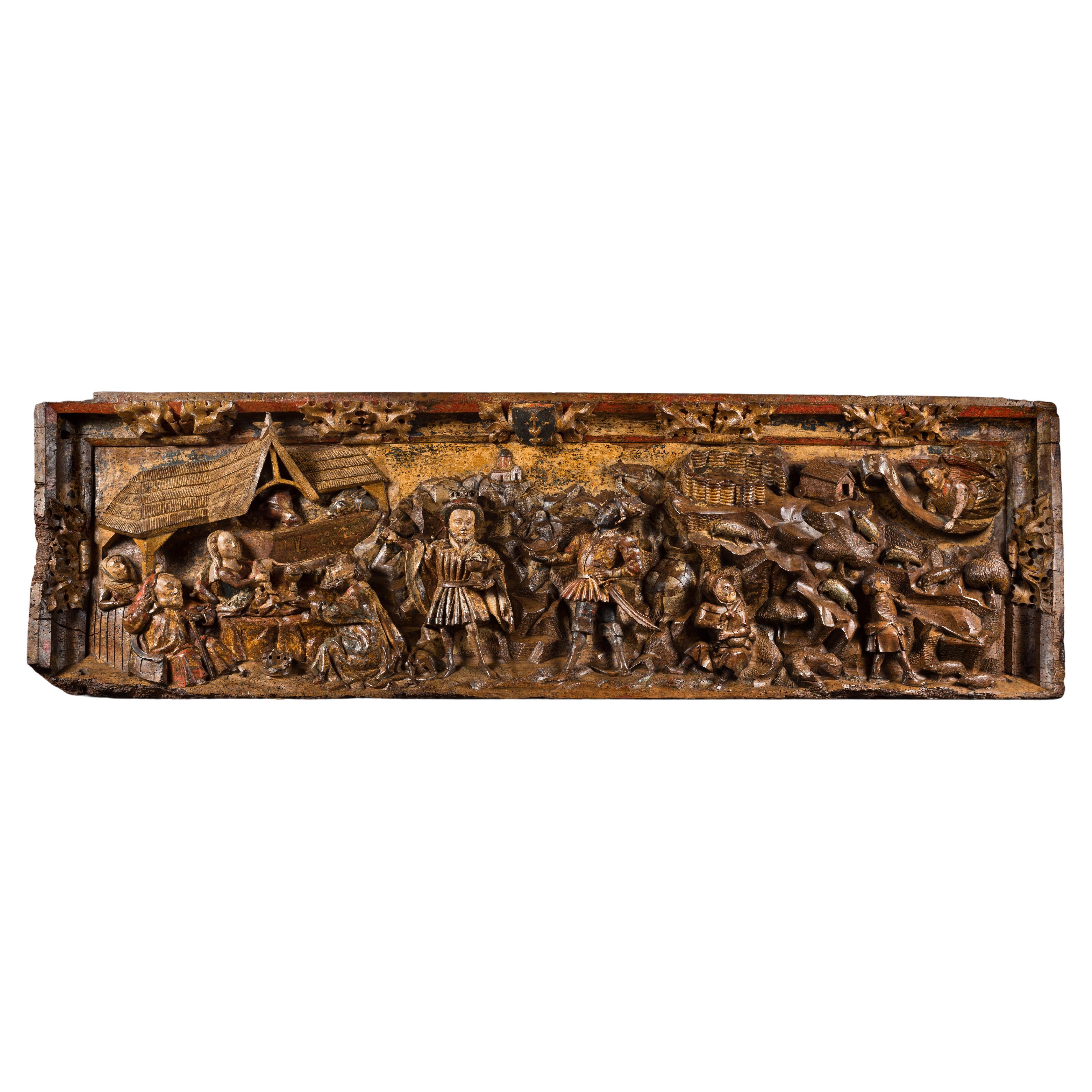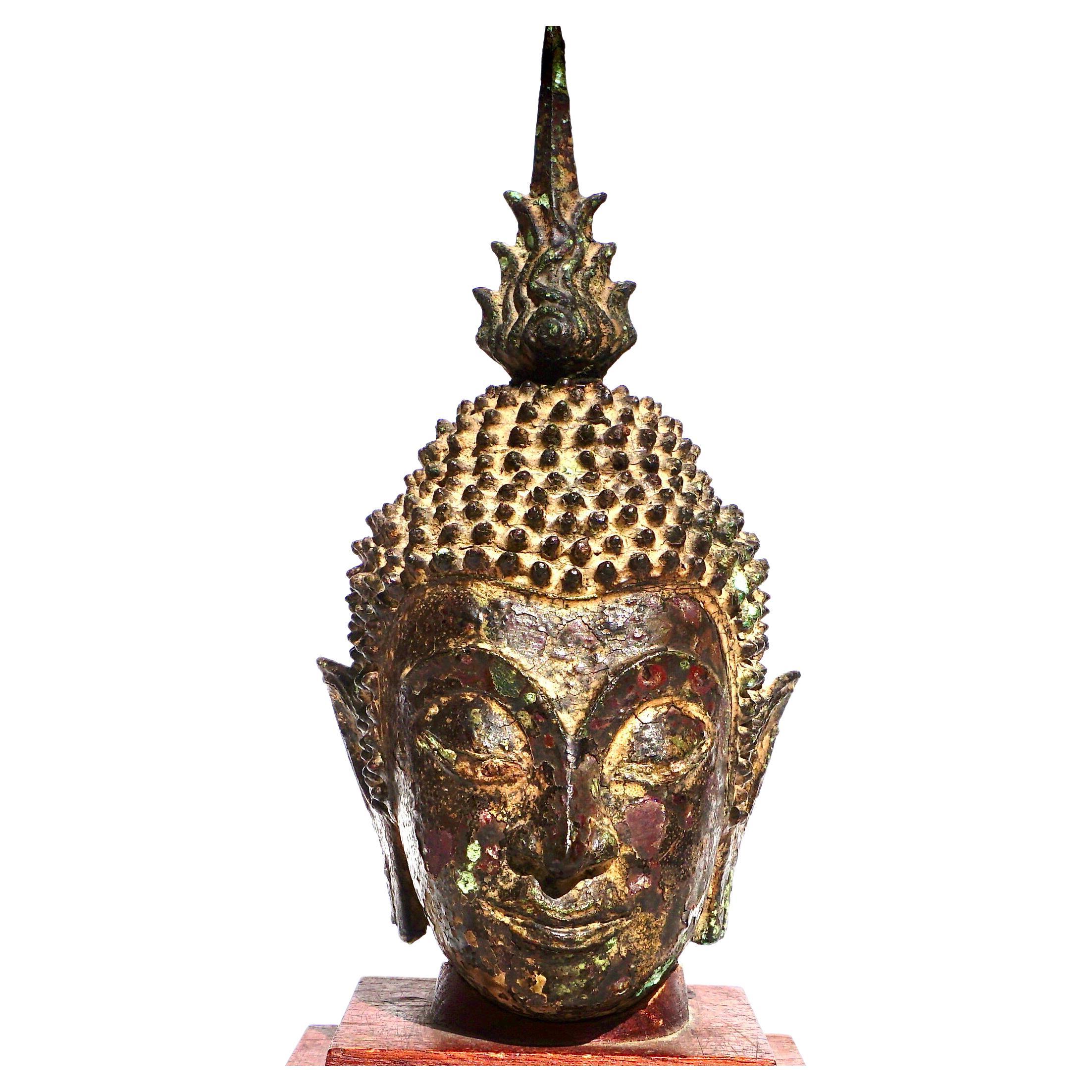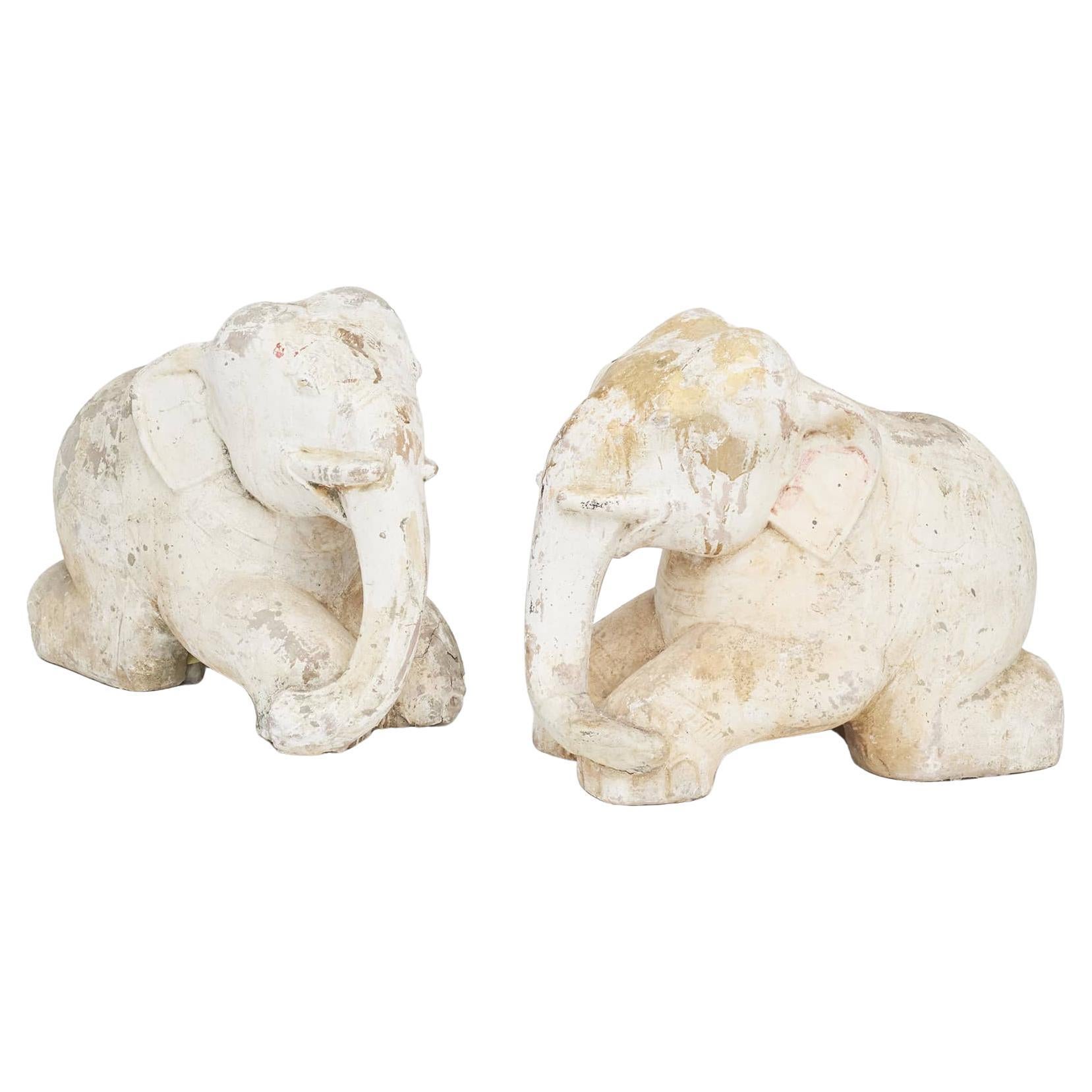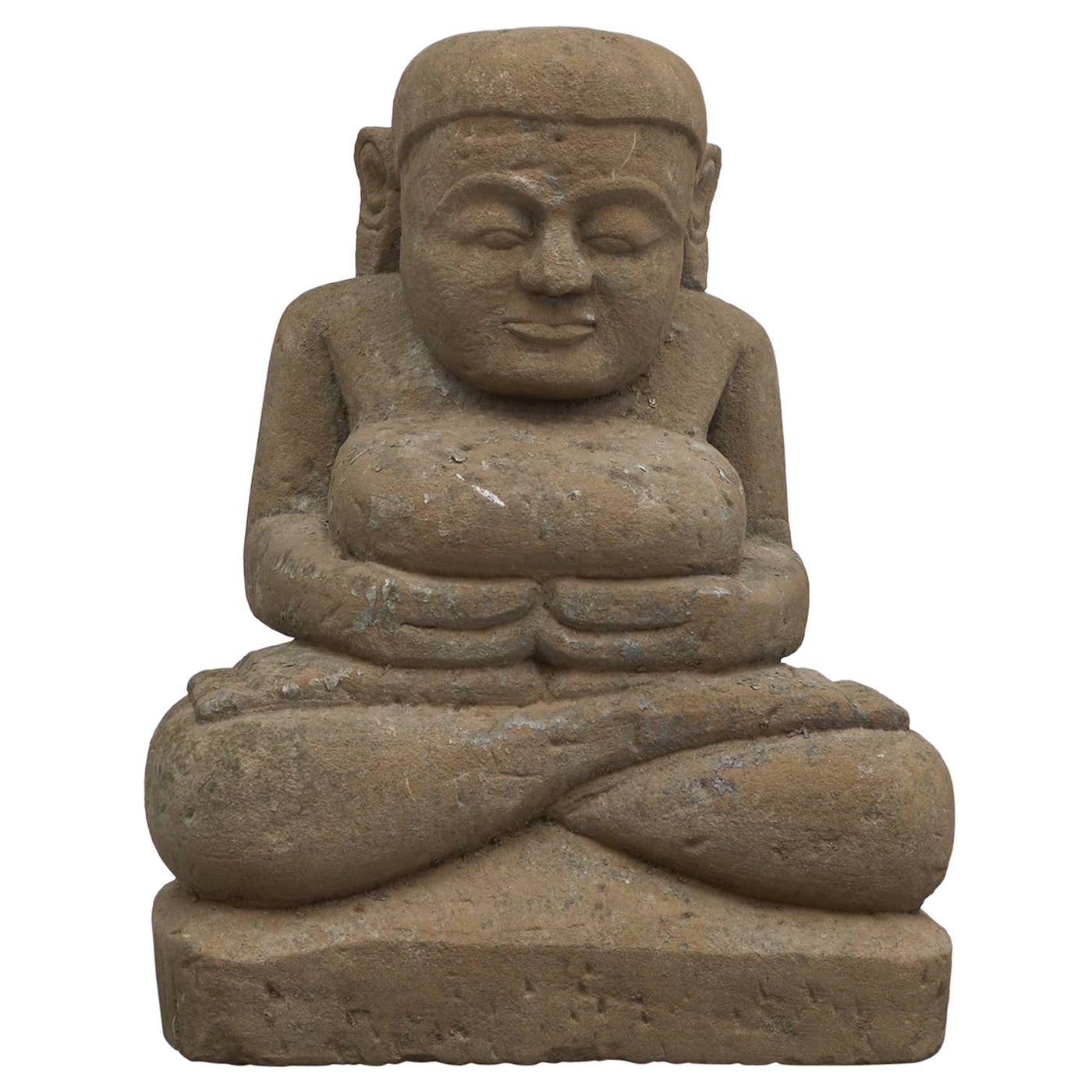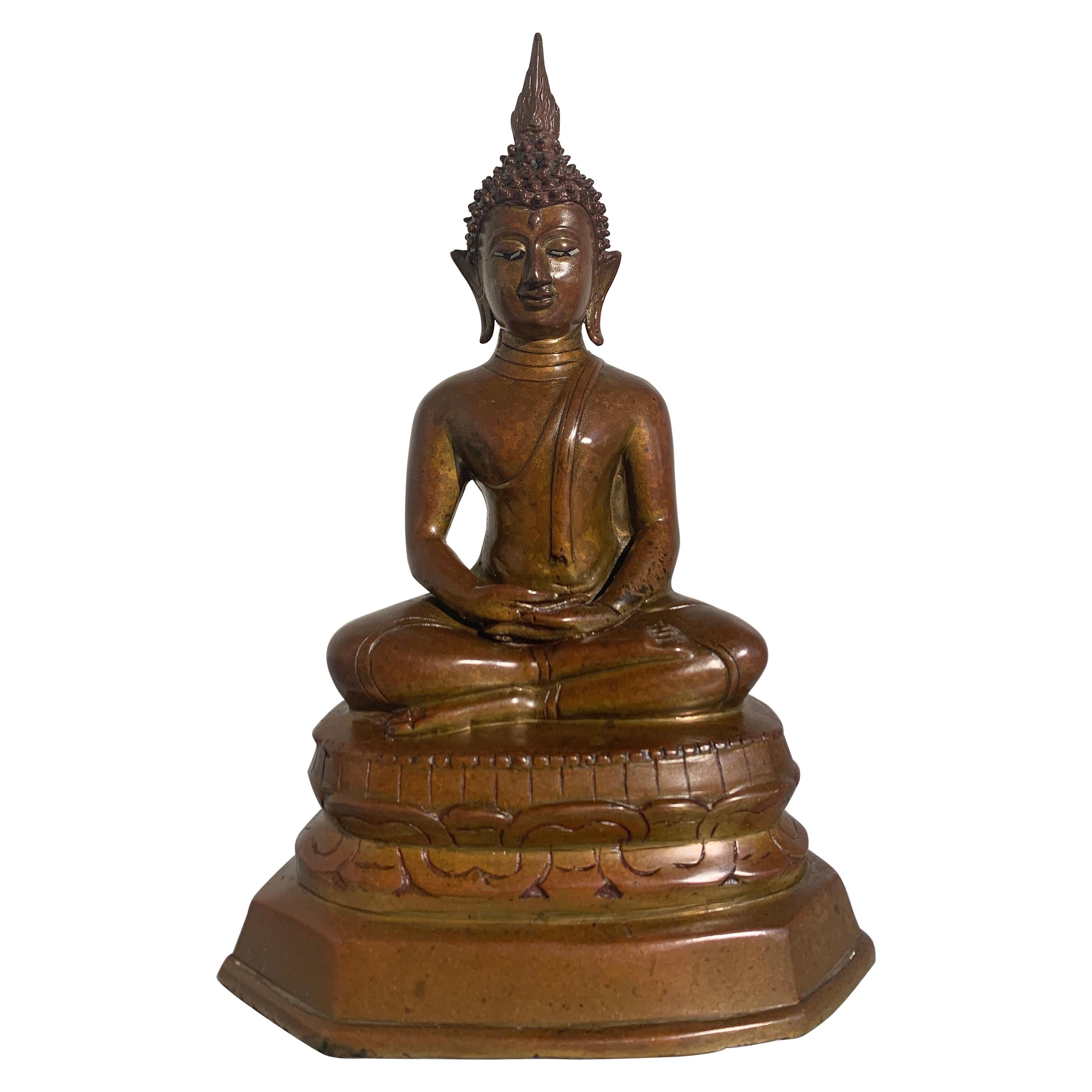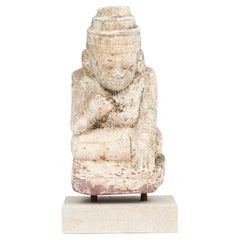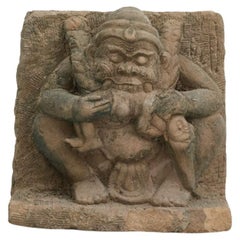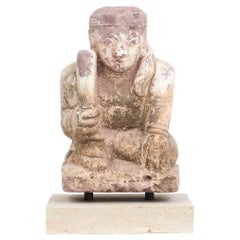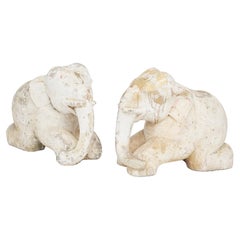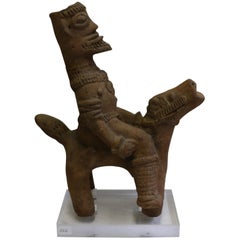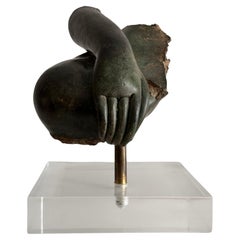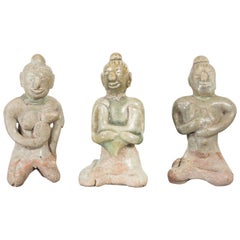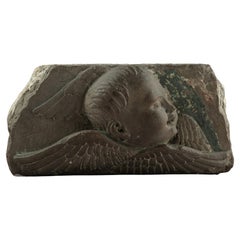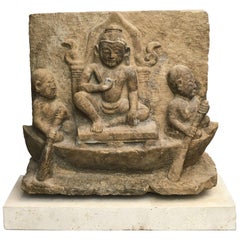
14th-15th Century Sandstone Temple Relief of Buddha on a Throne in a Boat
View Similar Items
Want more images or videos?
Request additional images or videos from the seller
1 of 12
14th-15th Century Sandstone Temple Relief of Buddha on a Throne in a Boat
About the Item
- Dimensions:Height: 20.87 in (53 cm)Width: 22.45 in (57 cm)Depth: 10.24 in (26 cm)
- Style:Other (Of the Period)
- Materials and Techniques:
- Place of Origin:
- Period:
- Date of Manufacture:14th-15th Century
- Condition:Wear consistent with age and use.
- Seller Location:Kastrup, DK
- Reference Number:Seller: 1041831stDibs: LU1007422206972
About the Seller
5.0
Platinum Seller
Premium sellers with a 4.7+ rating and 24-hour response times
Established in 1974
1stDibs seller since 2013
504 sales on 1stDibs
Typical response time: 3 hours
Authenticity Guarantee
In the unlikely event there’s an issue with an item’s authenticity, contact us within 1 year for a full refund. DetailsMoney-Back Guarantee
If your item is not as described, is damaged in transit, or does not arrive, contact us within 7 days for a full refund. Details24-Hour Cancellation
You have a 24-hour grace period in which to reconsider your purchase, with no questions asked.Vetted Professional Sellers
Our world-class sellers must adhere to strict standards for service and quality, maintaining the integrity of our listings.Price-Match Guarantee
If you find that a seller listed the same item for a lower price elsewhere, we’ll match it.Trusted Global Delivery
Our best-in-class carrier network provides specialized shipping options worldwide, including custom delivery.More From This Seller
View All15th Century Burmese Sandstone Seated Monk Sculpture
Located in Kastrup, DK
Seated monk carved in sandstone, originating from a Buddhist pagoda or temple in Burma, dating back to the 15th century.
Discovered as part of an archaeological find after an earthqu...
Category
Antique 15th Century and Earlier Burmese Other Figurative Sculptures
Materials
Sandstone
15th-17th Century Burmese Sandstone Demon Figure Mounted on Base
Located in Kastrup, DK
400-600 year old sandstone figure of a "Demon" carved in deep relief.
In good original condition with a natural age-related patina that emphasizes the figure's age and authenticity.
...
Category
Antique 16th Century Burmese Other Figurative Sculptures
Materials
Sandstone
15th-16th Century Burmese Sandstone Pagoda Guardian Sculpture
Located in Kastrup, DK
Sculpture of a pagoda guardian carved from sandstone,
Originating from a Buddhist pagoda or temple in Burma, dating back to the 15th-16th century. This piece was unearthed following ...
Category
Antique 15th Century and Earlier Burmese Other Figurative Sculptures
Materials
Sandstone
Pair of 18th Century Temple Elephants Carved in Sandstone from Burma
Located in Kastrup, DK
Pair of rare 18th century temple elephants carved in sandstone with chalk and leftovers of gold leaf.
Chalking is used as a surface to bind gold leaf. Originally fully covered with g...
Category
Antique 18th Century Burmese Other Animal Sculptures
Materials
Sandstone
17-18th Century Burmese Sandstone Buddha Seated in Meditation
Located in Kastrup, DK
Burmese carved sandstone Buddha sculpture.
Seated in dhyanasana with legs in virasana, the half lotus position, hands in dhyana mudra, the gesture of meditation.
Originates from ...
Category
Antique 17th Century Burmese Other Figurative Sculptures
Materials
Sandstone
Pair of Burmese Sandstone Temple Guards
Located in Kastrup, DK
A rare pair of carved sandstone Burmese temple guards. Originates from paragode in Burma c. 15-17th century.
Handcarved with fine details. Each guard ...
Category
Antique 16th Century Burmese Other Statues
Materials
Sandstone
$15,974 / set
You May Also Like
Equestrian figure Koma-Bulsa, Ghana, 14th-15th century
Located in Paris, FR
Terracotta, 14th-15th century (thermoluminescence test: Interexpert 388317 from March 18, 1988).
Koma-Bulsa motifs (Ghana), including a concave hairstyle with braided frontal ornamen...
Category
Antique 15th Century and Earlier Ghanaian Tribal Figurative Sculptures
Materials
Terracotta
A Thai Bronze, Buddha Fragment, 15th Century
Located in PARIS, FR
A Thai bronze, Buddha fragment, 15th century.
Arm, hand and leg fragment, mounted on a plexiglas stand from 70s.
Overall: 17,2 cm.
Category
Antique 15th Century and Earlier Figurative Sculptures
Materials
Bronze
Set of Three 14th or 15th Century Ceramic Fertility Figures from Thailand
Located in Yonkers, NY
A set of three Thai ceramic fertility figures from the 14th or 15th century. Created in Thailand during the 14th or 15th century, this set of petite ...
Category
Antique 15th Century and Earlier Thai Sculptures and Carvings
Materials
Ceramic
Renaissance Winged Cherub Relief
- Florence, 15th century
Located in Bruxelles, BE
Renaissance Winged Cherub Relief
Florence, Second Half of the 15th Century
Stone with traces of polychromy
Provenance: Important private collection, Northern Italy
This exceptional...
Category
Antique 15th Century and Earlier Italian Renaissance Figurative Sculptures
Materials
Stone
15th Century Burgundian Low-Relief Depicting Scenes of the Nativity
Located in Saint-Ouen, FR
Provenance : In the same private collection for several generations, Burgundy.
The canonical Gospels describe briefly the episode of the Nativity. It comprises three parts :
• The Preludes : the Journey to Bethlehem, the Census
• The Nativity
• The Announce to the Shepherds and the Adoration of the Magi
Only the Gospel according to Matthew (2, 1-12) speaks about the Adoration of the Magi. Staying vague about their number it does say they brought the newborn gold, incense and myrrh. The apocryphals, the fathers of the Church and many other authors have filled in the gaps of the evangelic tale. The sobriety and symbolic of the story have been a huge inspiration to artists. Although one of the oldest depictions of the Adoration of the Magi dates from the 2nd century the theme became very popular in Christian art during the late 14th century. One of the reasons explaining this success is that it celebrates both the Virgin and Christ at the same time.
This important walnut panel is carved in a strong relief and depicts the different steps of the story of Jesus’ birth.
On the left, the donkey and ox that have accompanied Mary and Joseph from Bethlehem are depicted behind a trough. On the thatch roof appears the star that would guide the magi to the place of birth of Jesus.
Mary is wearing a veil and is seating on a bed. She holds her baby at arm’s length to present him to the magi. Saint Joseph is by her side. The old man is holding a cane in his left hand while from the right hand he seems to uncover himself to greet the visitors.
A woman assists to the scene.
In front of the holy family the three magi stand behind one another to pay their homage to the newborn.
The first magi has a pointed beard. He is already kneeling out of deference and has placed his crown to his feet. He gives the baby a hanap filled with gold coins. This is Melchior as the legend describes him with white hair and a long beard.
Caspar, the second magi bears a cup of incense. He is looking at the third magi and with his right hand he points to the star that has guided them there. He has a short beard and wears crakow shoes, breeches and a wide sleeved doublet.
Finally Balthazar, the elegant last magi proceeds proudly towards the holy family with his one hand on the saber’s hilt and the other holding a cup. He brings the divine child the myrrh. He probably just dismounted as the horse can be seen behind him.
The scene is set in a very detailed and narrative decor. In the right part of the panel the shepherd receive the announce of Jesus’ birth. An angel comes down from heaven with a scroll bearing the good news in his hands. The herding dog sleeps peacefully while sheeps graze. At the top of the cliff we notice the gilded sheeps enclosure.
The panel’s moulded frame is carved with a foliated decor. In it’s centre appears a coat-of-arms. It is the alliance of the three magi’s arms. Indeed as it was common for legendary figures the three of them received imaginaries coat-of-arms. Thus, on a field of azure stands a star for Melchior, a crescent for Caspar and a pennon for Balthazar.
This high-relief panel is undeniably the work of a very skilled and imaginative artist. This key moment in the New Testament is transposed to a contemporary environment thanks to the figures’ clothing and the rural daily life scene. This way the universal dimension of the episode is highlighted allowing a better understanding for the contemporaries.
The sculptor has represented the episodes of the Adoration of the Magi and the Announce to the Shepherd with great talent and numerous details giving life to a picturesque and narrative scene. The important traces of polychromy give those already very animated scenes a stronger pictorial power and a rich dynamism.
Because of the picturesque and familiar realism so dear to the artists of the late Medieval era, of the didactic function of this type of panel as well as the quality of the sculpture this piece is an astounding example of Burgundian art of the 15th century.
Literature
Louis Réau, Iconographie de l’Art chrétien...
Category
Antique 15th Century and Earlier French Gothic Figurative Sculptures
Materials
Walnut
Ayutthaya Lacquered And Gilt Bronze Buddha Head 15th Century
Located in Dallas, TX
Ayutthaya Lacquered and Gilt Copper Bronze Buddha Head
Circa 15th Century
A beautifully lacquered and gilt bronze Buddha head from the Kingdom of Ayutthaya, Thailand, circa 15th ...
Category
Antique 15th Century and Earlier Thai Ming Figurative Sculptures
Materials
Bronze
Recently Viewed
View AllMore Ways To Browse
Sandstone Burma
Wooden Angel Head
African Spears
Art Deco Preiss
Art Deco Statue Light
Borghese Bronze
Car Mascot Hood Ornament
English Mannequin
Fisherman Bronze Sculpture
Hermes With Caduceus
India Ganesh
Indian Feather Headdress
Italian Tambourine
Kwan Yin
Lalique Hood Ornament
Large Hindu Sculpture
Male Torso Sculpture Bronze
Marble Jug
